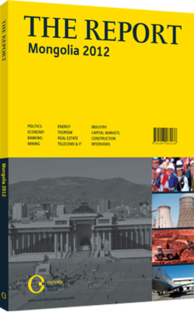OBG talks to B. Ganzorig, Chairman, Foreign Investment and Foreign Trade Agency

Interview: B. Ganzorig
What government incentives are in place to encourage foreign investments into non-mining sectors?
GANZORIG: It has already become obvious that investments in Mongolian mining sector are profitable. Now our objective is to bring foreign investment in non-mining sectors to help diversify the economy.
The corporate tax rate in Mongolia is between 10% and 25%, depending on income earned, and the amount of value-added tax is 10%, the region’s lowest rate. In compliance to government regulations, approximately 789 different types of machinery and equipment, including those used in the construction and metallurgy sector and those used for production purposes in small and medium-sized enterprises, are exempted from both Customs and value addition taxes.
As a result of investors’ producing value-added products in Mongolia, they are fully entitled to be covered in provisions allowing them to export around 7200 kinds of different products to the European Union markets under zero-import tariffs. The term of this preferential tariff was extended again in 2010.
Besides mining, Mongolia is assertively working to develop its agricultural sector, and is paying particular attention to developing Mongolia’s brand in the world. Since we view foreign investment as an opportunity to introduce new technologies and advanced production and services in our country, the issue of attracting foreign investment is a key focus of our attention.
What types of legal guarantees and rights can investors expect in Mongolia?
GANZORIG: Foreign investment is protected by Mongolia’s constitution, the Law on Foreign Investment, as well as other laws, regulations, international treaties and agreements to which Mongolia is a party. Mongolia does not treat foreign investors any differently in respect to the possession, use and disposal of their investments than we do local ones.
We have been a member of the World Trade Organisation since 1997 and we have become a party to a number of international common treaties and conventions aimed at supporting and protecting investments. The government established bilateral agreements for the support of investment with 44 countries and agreements on double taxation with 34 countries.
What upgrades in infrastructure are necessary to make Mongolia more attractive to foreign investors?
GANZORIG: Mongolia’s investment sector is being expanded not just in mining, but also in construction, education, energy and other services. The government has endorsed 26 priority projects that will be implemented at a preliminary estimation of $20.19bn. In terms of infrastructure, there are projects worth a total of $8.24bn, such as the construction of social housing, roads, highways, railways and power plants. We presume the attraction and acceleration of foreign investment will be a result of renovating and developing our transportation infrastructure to support our mineral extraction sector, along with the planned work on industrial complexes, including projects to improve railways, highways, logistical centres and power plants.
How does the new Mongolia Law on Concessions affect investors and their expected interest levels?
GANZORIG: Parliament’s endorsement of the two very important policy documents on public-private partnership and the new law on concessions has given a great impetus for foreign investments. There are many important provisions, such as making the economic framework more efficient, defining the scope of public and private cooperation, improving human resources, financing of domestic companies, and providing support on supplying new expertise and technologies.
There are 121 large projects included in the list of concessional properties covering nine priority areas. Some of the financing will come from the state budget under the social and economic development strategy, as well as being included in the portfolios of development institutions and other related organisations.
You have reached the limit of premium articles you can view for free.
Choose from the options below to purchase print or digital editions of our Reports. You can also purchase a website subscription giving you unlimited access to all of our Reports online for 12 months.
If you have already purchased this Report or have a website subscription, please login to continue.

